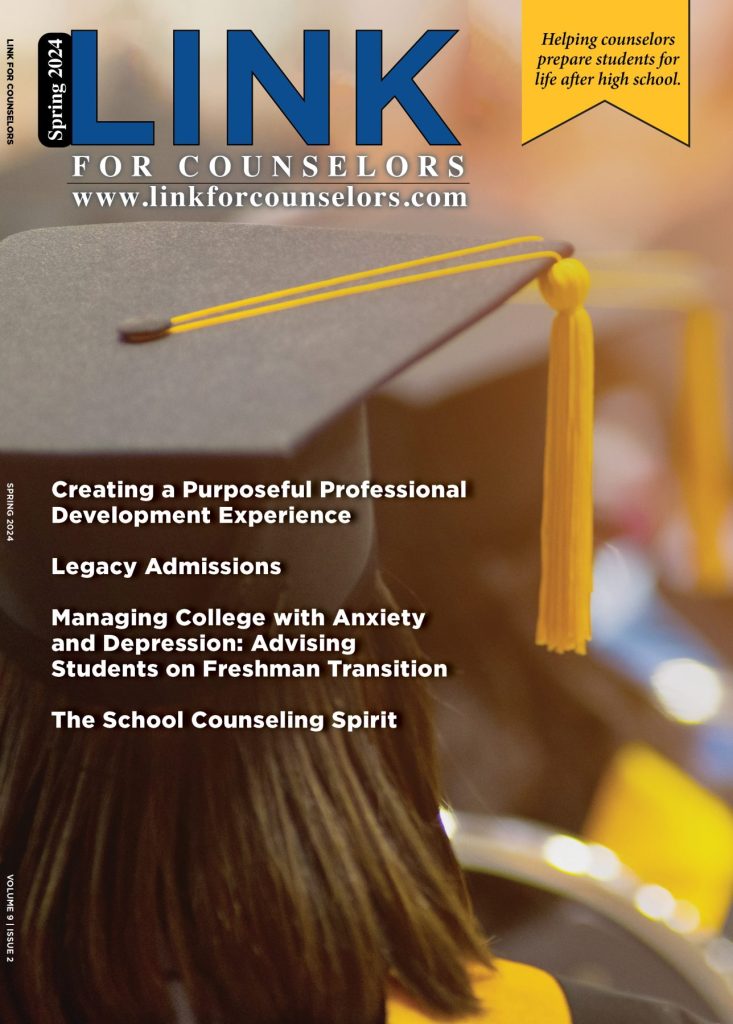Can Sharing a Link help a Student Get to College?
A while ago, Marilyn O’Toole contacted me on behalf of IECA. She and organizational leadership were concerned—as almost all of my admissions, financial aid, enrollment management, and high school and independent counselors are—about underserved students getting support during the college admissions process. IECA was thinking about creating a video series to navigate the Common Application. She asked if I could help connect her with people who might be able to lend a hand.
I immediately thought of Oregon State’s Ecampus. If you know Ecampus, it’s a distinctive online platform at OSU for online education. It’s fairly old by online education standards: It was started here, it is run by OSU, the classes are taught by faculty, and it offers the same degrees students can get at our Corvallis and Cascades campuses. It’s not a bolt-on, for-profit module that we slap our name on. It’s us, and it’s run with great care, eschewing the “Zoom U” approach: A single class goes through a long process of instructional design to address modality differences and ensure outcomes that are the same as our in-person classes.
It seemed to me that we could take that approach to developing modules to help students navigate Common App. The data Common App provides suggests that their service is not being used by as many low-income, first-generation students (many of whom are students of color) as any of us would like. And some substantial percentage of students don’t use the account they create to apply to a single college. Some of this is understandable: They might apply only to a community college, or to a UC institution that doesn’t accept Common App. But counselors who work with students from well-educated, wealthier families all know that they too, get stuck in spots, and it’s logical to assume that unsupported students might just give up.
After a year of work, we launched the AXS Companion to Common App. It’s a video guide that breaks down CA into easily digestible chunks. I think it’s great, and I’m very proud of it. When we previewed it at NACAC, the counselors in the room were amazed. One said that the test score section video alone was worth its weight in gold.
The AXS Companion is modular, so students and parents can watch the whole thing, or just the section they need help with. It’s free. It requires no registration. And there is no tracking function on the site, so you don’t have to worry about your students being tracked or recruited because of their visits. And it can be shared with anyone.
Now, the sad part: Usage was not what we had expected or hoped for. Colleagues at other institutions said they could not send out anything with another university’s logo on it to their prospective students (branding is kept to an absolute minimum); some people—let’s be honest—don’t like the association with IECA. Professional associations—many of whom talk a good talk when it comes to increasing access—may tacitly support this, but won’t actively do so. Common App has told us that they have tried video and it didn’t work; and we’re kept from updating the AXS Companion until the 2024 app launches on August 1 and we see for ourselves what changes are made.
I hope we can do better. We should do better. It’s time to do better.
So, here’s what you can do:
- If you work at a college, send a link to your prospective students. Maybe you want to use Landscape data to find students who are more likely to be underserved.
- Repost this to other social media sites, like Twitter, LinkedIn, Facebook, BlueSky, Mastodon, Threads, and others. Tell others you believe in this, and ask them to share.
- Reach out to community-based organizations you work with, and let them know about this resource.
- Send it to parent groups at your local schools.
- Copy and send this message to your local ACAC or counseling email lists. Do it more than once.
We have big plans for this, including versions in Spanish, but our time and efforts are finite and we’ll have to make hard decisions if this doesn’t get more support.
Here is the link. Share widely and let us know what we can do better.
Thanks for reading this long message. It’s as important a post as I’ll make. Here is the link.
Jon Boeckenstedt, is the Vice Provost of Enrollment Management at Oregon State University in Corvallis, Oregon. Check out his blog at https://jonboeckenstedt.net/higher-ed-data-stories/













